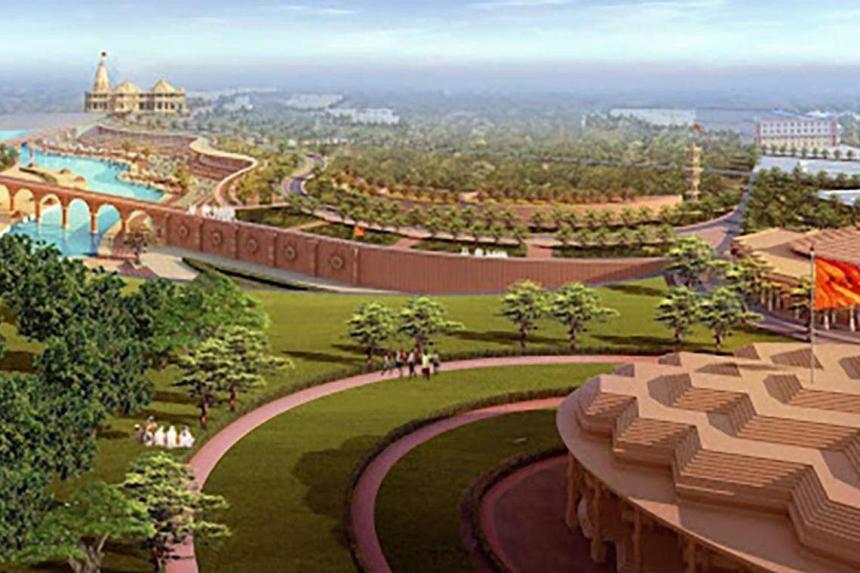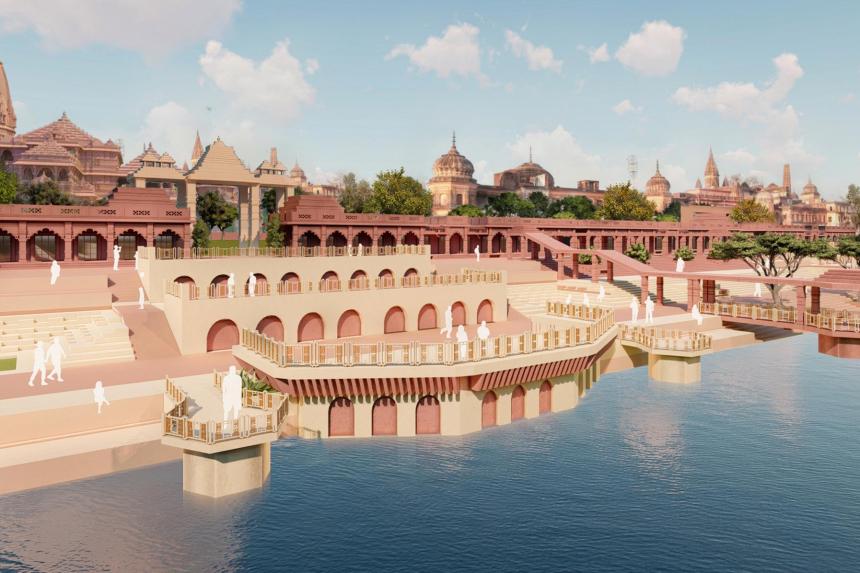SINGAPORE – Indian architects are bringing about historic change to Ayodhya by combining innovation and tradition to craft an immersive experience for visitors to the ancient city in northern India.
Delhi-based CP Kukreja Architects (CPKA) has come up with Ayodhya’s latest integrated infrastructure plan focused on the sustainable development of the city in Uttar Pradesh.
And Lucknow- and Delhi-based architectural studio Sthapati has combined traditional temple architecture with state-of-the-art design for the new Maharishi Valmiki International Airport, Ayodhya Dham, which commenced daily commercial flights on Jan 6.
Ayodhya – which is the birthplace of Lord Ram, the long-suffering god-king and protagonist of the epic poem Ramayana – is being hailed as an Indian renaissance city by local and foreign media.
Its new city masterplan and airport are designed to provide the modern infrastructure needed to support an expected spike in visitors to the Ram Mandir (Ram Temple), which made news globally when it was inaugurated on Jan 22 by Indian Prime Minister Narendra Modi.
The inauguration brings to an end a 500-year legal tussle between Muslims and Hindus, after the original Ram temple was demolished by Mughal emperor Babur in 1528. He later built the Babri mosque on the site.
In 2019, India’s Supreme Court approved the construction of the Ram Mandir after being satisfied with exhaustive evidence provided by the Archaeological Survey of India showing that an ancient Hindu temple had pre-dated the Babri mosque at the site.
The US$10 billion (S$13.4 billion) remaking of the city will drive a multiplier effect with new hotels and other economic activities, foreign brokerage analysts Jefferies said in a Jan 21 report.
The city will also set a template for infrastructure-driven growth for tourism.
In the report, titled Unlocking India’s Tourism Potential: Ayodhya’s Ram Mandir Inauguration, the firm said the revamped city could attract more than 50 million tourists who could spend more than US$10 billion a year.
In comparison, about five million people visited Italy’s Vatican City in 2023. Some 13 million visited Mecca, Saudi Arabia, in the same period.
According to urban designer Dikshu Kukreja, managing principal of CPKA, there were challenges in the Ayodhya urban masterplan, which started in 2020 after his firm was appointed by the government.
The main challenges were the rigours of transforming a city steeped in history and culture, and making it a modern city without losing its ethos or soul.

“A significant aspect of the masterplan is in seeing that the city doesn’t just grow, but also has sustainable growth which involves state-of-the-art modern systems and innovative technologies,” Mr Kukreja, 54, tells The Straits Times in an e-mail interview.
He founded CPKA – one of the world’s biggest architecture and urban design firms, with more than 125 architects and designers – in 1994.
Mr Kukreja says his work is rooted in the context of a site, and driven by sustainability and innovation.
For example, when his team looked at tourism, they focused on providing tourist infrastructure not only for the elite but also for different economic strata.
“Our vision document makes provisions for affordable homestays or dharamshalas,” he says. “This concept makes it an inclusive development, where even local residents can become a part of the city’s economic growth.”

The population of Ayodhya City as at July 2023 is about 2.5 million, according to Nagar Nigam Ayodhya, the official government website for the city.
Mr Harsh Varshneya, principal architect and director of multidisciplinary design practice Sthapati, says Ayodhya’s new airport was conceptualised to provide better connectivity for flights throughout India.
It is also designed to create an immersive experience for visitors and devotees while reflecting Ayodhya’s heritage.

The interior features skylights placed to help passengers easily navigate the airport, as well as artworks depicting scenes from the Ramayana.
“The most distinctive design feature is the grand stepped shikhar (pyramid) that stands at the main entrance, adorned with gleaming brass,” says Mr Varshneya, 33.
Founded in 1986, Sthapati is a pioneer in airport terminals and public transportation infrastructure, and is also sought after for its heritage conservation efforts.
Mr Varshneya adds: “The architecture follows the Nagara style, outlined with scriptures, presenting a majestic and culturally rich welcome for passengers.”
Ayodhya, he says, is an “eternal city” with a storied heritage and cultural impact that his team aimed to convey through the airport design.
“The goal was to capture the essence of this iconic city and to appreciate its rich history.”




